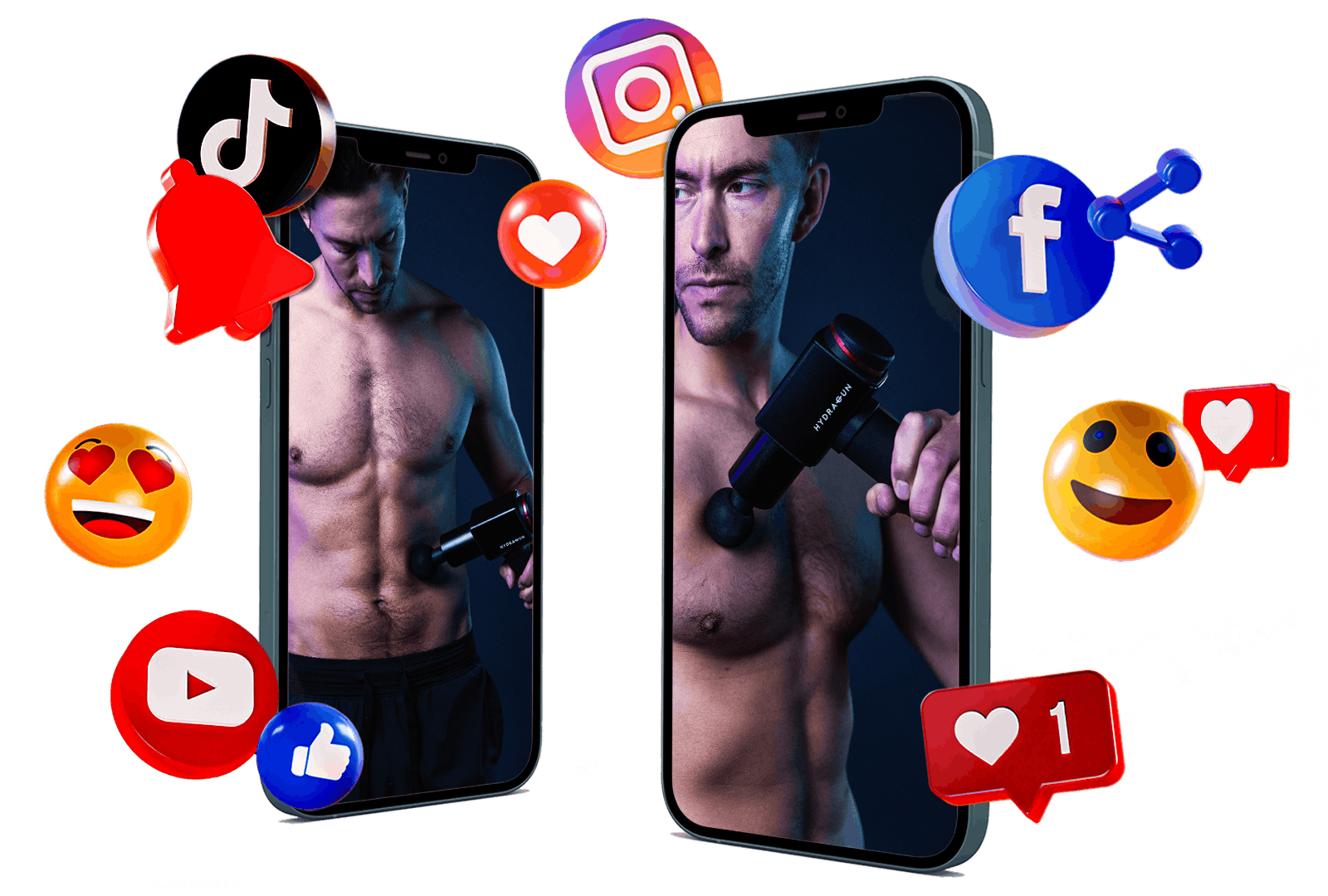Entering the World of Advertising Photography
The art of taking pictures for marketing and advertising campaigns is known as advertising photography and falls under the umbrella of commercial photography. The primary objective is creating promotional imagery that increases sales. Skilled photographers use eye-catching visuals to effectively communicate a message, captivate potential customers, and elicit an emotional reaction.

Starting a career in the world of Advertising Photography may appear deceptively simple; you’ve got the angles, perfected the 3-point lighting system, a shutter click like John Wick, a caffeinated night of editing, then photos-magnifico, right? Before the chef’s kiss, let’s run through a quick overview of understanding and mastering an array of visual styles as well as innovative techniques.
Success in the Competitive Field

To flourish within this dynamic career, photographers must elevate themselves in a crowded field of promotional materials. Advertising photographers slice through the digital noise by utilizing a variety of methods, such as color psychology and branding tactics, to identify their clients’ distinct tastes then filter them through impassioned narratives that effectively reflect a concept. While 500 daily emails might be easily ignored, just one breathtaking image can catapult companies toward instant recognition from their customer base! So, how does one breathe life into becoming a successful advertising photographer?
The Role of an Advertising Photographer

In advertising, commercial photography is a powerful tool that can establish an emotional connection between consumers and a product or service. An advertising photographer is responsible for creating images focused on a specific message a brand wishes to convey. Quality work as an advertising photographer requires the advertising photographer to have a keen eye for detail, understanding of the brand's image, and the ability to curate photographs that capture the attention of an audience.
Embracing Lifestyle Photography
Lifestyle photography is a popular form of commercial photography, this type of photography focuses on capturing instances of use that an audience can relate to. By approaching a concept with the viewer in mind, an advertising photographer generates connections with customers by presenting a solution to a problem in a way that enhances their quality of life.

Coca Cola is a great example of a brand that's used powerful advertising campaigns to fortify an emotional connection with consumers by incorporating products with relatable lifestyle situations. The company's marketing focus has always been on building a story around its' product by using creative and fun images to capture the attention of customers.

Using a stock photo is a decent option for some brands, but using a professional photographer for custom photos can play an integral part in a customer's decision to purchase. Custom images capture the essence of a brand while offering an authentic dimension that's as unique as the connections formed with consumers.
Significance of Print Ads
Print ads are another popular form of advertisement that rely heavily on good advertising photography. A brand logo is often the focus of an ad, but the accompanying image is just as important. Professional photographers' photographs express recognition of inclusion among audiences by extending a familiar consistency throughout the entirety of a project.
Consistency breeds familiarity, so it's important to work with an advertising photographer that represents the brand accurately. Using the same photographer for multiple ad campaigns can create a recognizable image that consumers associate with a product or service.

Conveying the Brand's Identity

Producing images that convey the nature of a brand isn't an easy task, but with the help of a professional photographer, it's obtainable. A photograph is a powerful tool that can be used to relay a specific message to an audience, by using templates and ingenuity, photographers can produce images that are compelling and effective.
In commercial photography, the objective is to craft a project that encapsulates a company's services while communicating that story to a target audience. By collaborating with a professional photographer, you can develop a gallery of images that shifts the tone of engagement to a personalized environment for viewers. Whether it’s lifestyle photography, print ads, or custom imagery, exceptional advertising photography is an art that significantly impacts the success of a brand's marketing.
Compelling Reasons for Advertising Photography's Importance
The Impact of Social Media

Social media has become an indispensable tool, offering direct and candid engagement with a customer base. The right photos can turn a simple post into a viral sensation, amplifying the brand's message and reaching new customers. Remember to remain authentic true to the brand identity as you adapt to the dynamic landscape of social platforms.
The Role of Storytelling
Storytelling is key to any form of branding; it helps create a narrative the audience can relate to. By weaving a story around the product or service, advertisers foster a connection beyond a simple transaction. Creativity combines visual and narrative pieces into a cohesive message that resonates with viewers and encourages investment into the brand.
The Art of Capturing Emotion

A successful ad doesn't just showcase a product or service; it also elicits an emotional response. By tapping into the emotions that drive consumer behavior, advertising photographers create powerful photographs that resonate with their target audience. This involves understanding the brand's core values, then translating it into a narrative that speaks to the heart of the consumer.
Variety in Promotional imagery
The primary goal of advertising photography is to increase sales by inspiring customers to make a purchase. To achieve this, brands must separate themselves from competitors with a spectrum of powerful visuals and concepts. Here's a list of popular ways to advertise your brand logo your next campaign:
A. In-house marketing
B. Billboard ads
C. Stills used in TV commercials
D. Product shots for your website
E. Display banners
In-House Marketing Magic
In a nutshell, in-house marketing is the sorcery conjured up by an organization's very own wizards. Crafting the perfect potion requires experimentation and a keen understanding of the business, target audience, products, and unique selling propositions.
The Timeless Charm of Billboards

Despite the digital revolution, a sign or a billboard remain potent ad strategies, particularly for enchanting local businesses. Billboards excel at building brand awareness and casting their spell on the masses. But beware, even in bustling areas, your visuals must be mesmerizing enough to stir up a frenzy around your brand. The mantra for billboard success: crisp copy, potent visuals, simplicity, and unforgettable flair.
The Power of Stills in TV Commercials
Commercials are the pièce de résistance in the world of advertisement, showcasing your brand's essence, setting your products apart, and demonstrating your merit. If a full-fledged commercial seems beyond your budget, there's still plenty of economic strategies for advertisement. Boil down your creative vision to its' core and leverage striking product photographs with the right messaging to create a TV ad that packs a punch.
Product Shots: The Make or Break Moment

Product shots are the bona fide sword in the stone for your brand. Why? Customers gauge your products and services' worth and your brand's reputation through visual presentation. So, captivating product shots are vital to driving business.
Display Banners: The Digital Billboard
Witness ad photography in all its glory through display banners peppered across your favorite websites. These digital billboards blend text, pictures photos, and GIF's, beckoning prospects to discover more about your offerings. Remember to polish your pictures to ensure top-notch image quality.
Working with Professional Teams

While some businesses may choose to handle their advertising photography in-house, there are undeniable benefits to collaborating with a professional photography team. These experts bring years of experience, technical know-how, and a fresh perspective to the table. By working with a dedicated photography team, brands can tap into new ideas and innovative techniques that elevate their advertisements to new heights.
Benefits of advertising photography
Visual communication provides several advantages to a brand, including the ability to illustrate their identity in an appealing manner. Learning more about the creative style of an organization supports the evolution of brand loyalty. As ads are increasingly available digitally, these pictures reach an audience of millions of viewers worldwide, increasing the baseline for point of purchase. A viral image increases the reach of a brand and its' products exponentially.
Although technological advances certainly improve advertisers toolboxes, the most fundamental principles of advertising remain the same. Networking and connections themselves are an elusive holy grail for advertisers who want to build longstanding relationships among customers as well as industry professionals.
The Evolution of Advertising Photography: Staying Ahead of the Curve
As with any creative industry, advertising photography is constantly changing. To stay relevant and competitive photographers must stay informed about the latest trends, technologies, and consumer preferences. Embracing new techniques, experimenting with different styles, and continually refining one's craft are essential in the ever-changing landscape of advertising photography.
The Fusion of Art and Commerce
Advertising is a unique blend of art and commerce. While it is ultimately a tool to sell products and services, it also requires personalization with a strong creative vision and passion for storytelling. The best advertising photographers can achieve a balance between meeting commercial objectives and pushing the boundaries of their craft, resulting in images that are both compelling and visually stunning.
A quick primer on advertisement photos

A photograph can capture a moment in time that tells a story or conveys a message to the viewer through a simple image. Although the picture can be digitally modified to enhance certain aspects of the photograph, the concept of picture is usually grounded in a real-life situation that is believable or relatable to the audience. Photography allows simplistic acknowledgement of customer's experiences and personal history to create a bond that reinforces brand identity.
Best practices for utilizing photography in ad campaigns
Relevance:
Choose pictures and photographs that accurately represent and resonate with the target audience. The image should be in line with the brand's identity and messaging.
Quality:
Source the image from reputable suppliers to ensure quality. High-resolution images are crucial for creating a professional and polished appearance.
Authenticity:
Go for photography that appears genuine and relatable. Avoid an overly staged or generic image. If the audience doesn't feel an emotional connection or link to the photograph, they won't bond with it, and won't buy anything. This is a situation where less is often more. Leave room for the audience to create their own story.
Diversity:
Search for a diverse range of photography to represent various demographics, lifestyles, and cultures. This not only enhances the inclusivity of the campaign but also increases the likelihood of connecting with a broader audience and market to sell.
Licensing:
Ensure that any image or photograph sourced for the campaign has the appropriate licenses and usage rights. This helps avoid legal issues down the road.
The Importance of Ethical Marketing
In today's increasingly conscious consumer landscape, ethical practices are more important than ever. That means ensuring that a photograph is authentic and representative of the appropriate target audience. Brands should strive to create inclusive and responsible ad campaigns that reflect values and avoid perpetuating harmful stereotypes.
The Growing Importance of Sustainability in Advertising Photography
As consumers around the world become more environmentally conscious, sustainability has become a key consideration in any industry. This means incorporating eco-friendly practices from energy-efficient lighting to reducing waste on set. In addition, advertising photographers should consider how their approach can promote sustainable products and lifestyles, contributing to a more responsible and environmentally friendly consumer culture.

The Role of Post-Production in Advertising Photography
Post-production is a crucial step in the process, as it can significantly impact the final result. Through skilled editing and retouching, photographers can enhance an image, correct imperfections, and bring a creative vision to life. This step is not to be underestimated, as it can make a difference between a mediocre photo and a truly captivating image that will grab the attention of the intended audience.
In conclusion, good advertising photography, is a dynamic and crucial aspect of any successful marketing campaign. By understanding the importance of ad photography, employing various types, and mastering the art of editing, you'll be well on your way to creating unforgettable visual stories that resonate with your target audience.
